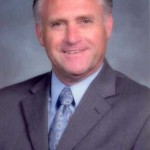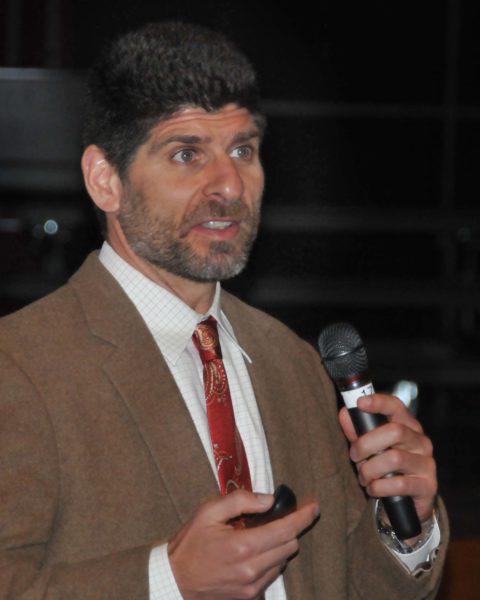The move toward an increasingly digital society, and the emergence of a new era of accountability in the nation’s schools, have changed our expectations of the superintendency. As school leaders come to rely on technology and the internet to engage students’ interest, track their progress, personalize instruction, and aid in decision making, an understanding of how technology works and how it can be used to transform teaching and learning is an increasingly essential characteristic for the 21st-century school superintendent.
In our 10th annual Tech-Savvy Superintendent Awards, sponsored by K12 Inc., Promethean, the Pearson Foundation, and JDL Horizon’s Eduvision, eSchool News recognizes 10 of the nation’s top K-12 executives for their outstanding ed-tech leadership and vision. Chosen by the editors of eSchool News with help from last year’s winners, these 10 exemplary leaders will be honored in a private ceremony held in conjunction with the Century Club 100 meeting at the American Association of School Administrators’ annual conference in Phoenix Feb. 11.
 Eric Conti
Eric Conti
Burlington Public Schools
Massachusetts
Although Eric Conti has been the superintendent of Burlington Public Schools (BPS) for only a year and a half, in this short period of time the district has progressed from not having a clear plan for using technology to among the ed-tech leaders in Massachusetts.
Immediately after his arrival, Conti started the first BPS blog to help connect stakeholders with the district. Now, there are at least 25 blogs operated by classroom teachers and extra-curricular groups, and new ones are added routinely to keep community members engaged and informed.
Conti hosted a Technology Night in October 2008 to raise awareness of the district’s need for technological improvements. He says the district must stop thinking about technology as an add-on, and instead think of it as another utility–as essential to the district’s operation as heat or electricity.
Burlington is one of the only school systems in Massachusetts to move to a cloud-computing model. The Burlington Link, or BLINK, gives all teachers, staff, and students equal access to the same applications online, both at school and from home. By using open-source applications and managing other software licenses through the cloud, BPS will be able to free up more money for hardware purchases, Conti believes. The district also will save on manpower, because updates won’t have to be loaded individually on hundreds of computers.
 Jan Harris
Jan Harris
Cullman City Schools
Alabama
Jan Harris has overseen a nationally recognized one-to-one laptop program in Cullman City high schools since 2005, and officials have tracked a 13-percent increase in test scores in recent years. She has introduced new forms of online communication, and in a recent state survey, 95 percent of the district’s teachers said they have sufficient access to technology and training.
Under Harris’s leadership, the district has secured more than $500,000 in grant money to support its laptop program for students in grades 7-12. During the time the laptop program has existed, writing scores are up, attendance has improved, and discipline referrals have dropped by 40 percent. What’s more, the number of honor roll recipients has increased by 12 percent.
The laptop program has brought national recognition to the district. The National School Boards Association chose Cullman City as one of its three technology “Salute Districts” for 2009, and district officials were invited to speak about the initiative at NSBA’s Technology + Learning conference in 2006. District officials also discussed the laptop program at the Alabama Education Technology Conference in 2007 and 2008, and Cullman City was asked to host the Alabama Technology Regional Meeting in 2007 in recognition of its status as a state leader in technology use.
Harris is continually looking for ways to improve and to make sure the district is meeting the needs of today’s learners. She encourages her staff to read books such as The World is Flat and Web Literacy for Educators, and she recently hosted Alan November’s team of technology experts, who came to observe Cullman City classrooms and make recommendations for improving the district’s use of technology.
 Manuel L. Isquierdo
Manuel L. Isquierdo
Sunnyside Unified School District
Arizona
Manuel L. Isquierdo joined the Sunnyside Unified School District in July 2007, and four months into his tenure there he launched Project Graduation, aimed at reducing the district’s dropout rate. Technology is a key component of this plan, serving as both an incentive for students to succeed and as a means of intervention for at-risk youth.
The project’s focus on credit recovery, attendance, and intervention already has led to a significant improvement in the number of students graduating from the district. As part of the project, Isquierdo insisted on 100-percent efficiency in online attendance-taking district-wide.
An element of the project called the “Digital Advantage” uses laptop computers as an incentive to increase the graduation rate and bridge the digital divide. High school students can earn laptops by achieving the four A’s: academics, attendance, (extracurricular) activity, and attitude (no out-of-school suspensions). During the 2008-09 school year, 505 freshmen (40 percent) and 339 upperclassmen earned laptops; 99 percent of freshmen who earned laptops were promoted to the 10th grade. Attendance improved significantly, and 22 percent of the district’s high school students now have laptops overall.
Within six months of launching Digital Advantage, Isquierdo secured more than $1 million in support for the program from business and community sponsors. This year, the project has expanded to include an offshoot called Digital Advantage Parents, which targets middle and high school families, and another offshoot called Digital Advantage Eighth-Grade Scholars–a college preparation and incentive program for students transitioning from eighth grade to high school.
 Chip Kimball
Chip Kimball
Lake Washington School District
Washington
As the former chief technology officer for the sixth largest school district in Washington, and as an advocate for instructional technology at both the state and national levels, Chip Kimball’s commitment to ed-tech integration is obvious. A highly respected consultant and keynote speaker on school improvement, innovation, governance, and the systemic use of technology, Kimball stays current on the latest ed-tech research and best practices, and he models the use of technology in everything he does.
Lake Washington uses a vast array of technology resources–including a fiber-optic network and media-rich classrooms–to support everything from payroll, to work-order management, to the teaching of 21st-century skills. Classroom teachers are capable of delivering high-quality, multimedia-rich lessons, and technology integration is now a required job skill for working in the district. These measures are supported through contracted compensation (97 percent of the district’s teachers have opted to earn an extra $1,250 each year by demonstrating effective ed-tech integration) and by a Technology Integration Department focused on bringing new innovations into instruction.
Kimball has served on several ed-tech boards, including the International Society for Technology in Education, and he has been an advisor for numerous companies and nonprofits, including Hewlett-Packard, Microsoft, and the Bill and Melinda Gates Foundation. Most recently, Kimball served as an education strategist for the Paul G. Allen Family Foundation. He also is active in the Consortium for School Networking’s “Empowering the 21st Century Superintendent” initiative.
Kimball has written several articles and books on technology in education. He developed the Technology Maturity Model, a methodology for effective technology planning, and created the Technology Support Index, a comprehensive tool for technical support.
 Pamela R. Moran
Pamela R. Moran
Albemarle County Public Schools
Virginia
Pamela Moran is an active Twitterer, blogger, and innovator who advocates the use of technology to help drive continuous school improvement. She has provided a Flip video camera to all principals and members of the district’s leadership team, which they use to record and discuss professional learning communities at work.
Team members also use the cameras to record student learning and look for high levels of Bloom’s taxonomy. In addition, each leadership team member has an iPhone with applications that allow members to report their observations on classroom walkthroughs in real time, submit information for school improvement plans, and interface with teacher performance appraisals.
Albemarle County is in the process of creating an enterprise portal solution to integrate its technology systems and create a unified experience for users, per Moran’s request. She also has led several innovative uses of technology in classrooms, such as a pilot project that uses iPod Touches instead of textbooks, and a Physics Flexbook project: Albemarle County is one of five school systems in the nation partnering with CK12 to roll out an online textbook for physics students, each of whom will access the curriculum on a netbook.
Moran’s ed-tech leadership extends to the state level as well. She currently chairs the DaVinci Design Team, a group of Virginia superintendents who lead for significant transformation of Virginia’s Standards and Assessment of Learning Programs. Under her leadership, the DaVinci Design Team has received a grant from the state Secretary of Technology to develop a scalable, virtual professional learning network for Virginia’s educators. And the team has rallied the Coalition of Virginia’s Educational Organizations to develop a unified position statement on the importance of 21st-century learning, beginning with a position statement written by the DaVinci Design Team and adopted by the Virginia Association of School Superintendents.
 Carolyn Ross
Carolyn Ross
Churchill County School District
Nevada
Initiatives such as paperless school board meetings and access to online courses are no longer unusual in K-12 education, but Carolyn Ross was out in front on these efforts long before they became commonplace.
Several years ago, Ross secured laptops for school board members and began allowing stakeholders to download the agenda and attachments for board meetings from the district’s web site, and board meetings also are recorded and streamed in real time on the site. In fact, such transparency and community outreach are key components of the district’s technology plan: Parents of middle and high school students are encouraged to use the district’s portal to check their children’s grades and connect with teachers, and teachers have been given the tools to create their own class web sites.
Under Ross’s leadership, the Adult Education program began offering online classes to help adults in the community attain credits, and high school students also are encouraged to take online classes. Principals use technology to assess instruction during walkthroughs, and Churchill County was among the first districts in the state to outsource its technology services to IT experts. A web-based help-desk system allows staff members to submit their technical requests online.
http://www.churchill.k12.nv.us
 Kim Ross
Kim Ross
ISD 294 Houston Public Schools
Minnesota
Kim Ross is a pioneer for virtual learning in his state. Using a non-traditional approach to solving a traditional problem (declining student enrollment), he has taken a small, rural district of about 450 K-12 students tucked away in the southeastern corner of Minnesota and transformed it into a vibrant, financially sound school system now serving nearly 2,500 pupils from around the state, thanks to his creation of the Minnesota Virtual Academy.
The academy itself enrolls more than 2,000 students, with one program serving students in grades K-8 and another serving those in grades 9-12. Students attending traditional schools in Houston also can take online courses through the academy, supplementing the instruction they receive in the classroom with Advanced Placement offerings and other online courses. This ability is a key factor in the success of Houston High, which was featured in U.S. News and World Report as one of “America’s Best High Schools.”
Ross is also a founding team member of the Minnesota Center of Online Learning, and in 2008 he received an appointment to the Minnesota Broadband Task Force. He was elected chair of the South East Minnesota Network in 2007 and is a legislative committee member of the Minnesota Online Learning Alliance.
 Amy Sichel
Amy Sichel
Abington School District
Pennsylvania
As superintendent of Abington School District, a diverse suburban district of about 7,000 students just outside Philadelphia, Amy Sichel has fostered an environment of innovation that is directly responsible for landing several highly coveted ed-tech grants.
An educator for more than 30 years and former school principal, Sichel believes technology can help level the playing field for all students. Her vision was recognized nationally in 2006 when Dell, Microsoft, and Intel chose Abington Senior High School from among more than 1,000 applicants for the companies’ FutureReady Education Visionary contest. The high school received more than $250,000 in equipment to establish a program that provides flexible, contextual, ubiquitous learning using handheld technologies to differentiate instruction.
The FutureReady project was conceived as an integral part of the district’s Opportunities to Learn initiative, a nationally recognized reform effort that provides a rigorous college-preparatory education to students of all backgrounds and capabilities, including special-needs students. This program has been recognized by the Delaware Valley Minority Student Achievement Consortium and in national forums for its measurable progress in reducing the achievement gap.
Abington also was one of the first school systems chosen to participate in Pennsylvania’s Classrooms for the Future program, which provided laptop computers and other interactive, one-to-one technologies for core subject-area classrooms in high schools across the state. This effort has had a dramatic effect on student engagement and has encouraged a move away from static, teacher-centered instruction. In 2007, the district received an $80,000 grant to establish Pennsylvania’s first educational cyber cafe, giving high school students an informal environment in which to collaborate and learn using various technologies after school.
Also that year, two of Abington’s elementary schools were chosen to receive Technology for Learning grants from Hewlett-Packard. It’s no coincidence that Abington was one of the only districts in the country to win two of these grants; Sichel encourages her staff members to develop innovative grant ideas by giving them administrative support and modest financial recognition for successful programs that bring additional technologies to the district. In this case, teachers were able to use mobile technologies secured through the HP grants to support hands-on experiments in science classes and video and music production for students with special needs.
Sichel’s peers also have recognized her accomplishments. She recently received an award from the Pennsylvania Association of School Administrators for innovative use of technology, and she was named the 2010 Pennsylvania Superintendent of the Year as well.
 Gary Smuts
Gary Smuts
ABC Unified School District
California
Gary Smuts has served as superintendent of California’s ABC Unified School District since 2005. During that time, he has implemented a technology-based high school graduation requirement that has received national recognition. This “TechGradRequirement” builds on the International Society for Technology in Education’s National Educational Technology Standards (NETS) to create lessons and projects focused on effective technology integration.
The policy states that all students must demonstrate technology proficiency in grades 7-12 as a prerequisite to graduating from high school. The Technology Graduation Requirement went into effect in the fall of 2009, and it will be required for graduating from the district beginning with the high school class of 2013.
To meet this goal, the district has set annual benchmarks for the percentage of classes in each secondary school that (1) integrate technology into instruction, (2) give students the opportunity to learn key 21st-century skills, and (3) prepare students for work and citizenship in the digital era. Smuts also created a YouTube video message to his 1,100 teachers, asking for their support in aligning their instruction with NETS by designing projects that have students use technology to solve problems related to every core curriculum area.
To support the initiative, ABC Unified partnered with the Los Angeles County Office of Education to deliver professional development to its teachers. To date, all 10 secondary schools in the district have integrated technology within at least half of their classes.
The Los Angeles County Department of Education gave this initiative its 2009 Digital Voice Award for Innovation. Smuts also was chosen as the 2009 Association of California School Administrators’ State Superintendent of the Year.
 Craig Witherspoon
Craig Witherspoon
Edgecombe County Public Schools
North Carolina
Edgecombe County is a rural North Carolina district of 7,300 students, about 65 percent of whom qualify for free or reduced-price lunches. But Craig Witherspoon hasn’t let this economic challenge stand in the way of delivering 21st-century tools and resources to prepare the district’s students for success in a global economy.
Witherspoon secured the funding to support a one-to-one wireless laptop program for Edgecombe County’s 2,200 high school students and their teachers, and he made sure his staff had the training, support, and online curriculum they needed to ensure the program’s success.
Much of the funding for the initiative came from a $1.5 million grant from the Golden Leaf Foundation, and the North Carolina-based technology firm SAS helped provide staff training. The district is using SAS Curriculum Pathways software in all core disciplines; the software provides interactive lessons that target higher-order thinking skills and cover a variety of learning styles.
The Friday Institute at North Carolina State University is evaluating the program to determine its effectiveness–but Witherspoon says scores already are up in three of the district’s four high schools, and discipline problems are down. One reason the program appears to be paying off is that the district has designated key members of the faculty–four at each school–to act as facilitators for the project.
Technology training continues for the district’s staff, as Witherspoon recognizes the importance of ongoing professional development. More than 180 teachers have received training through the Intel Teach train-the-trainer model, and upon completion of the training, teachers are given a laptop, projector, and document camera for their classroom.
- 4 ways to support work-based learning - April 23, 2024
- Prioritizing inclusivity in game-based learning - April 22, 2024
- Friday 5: Universal Design for Learning - April 19, 2024

